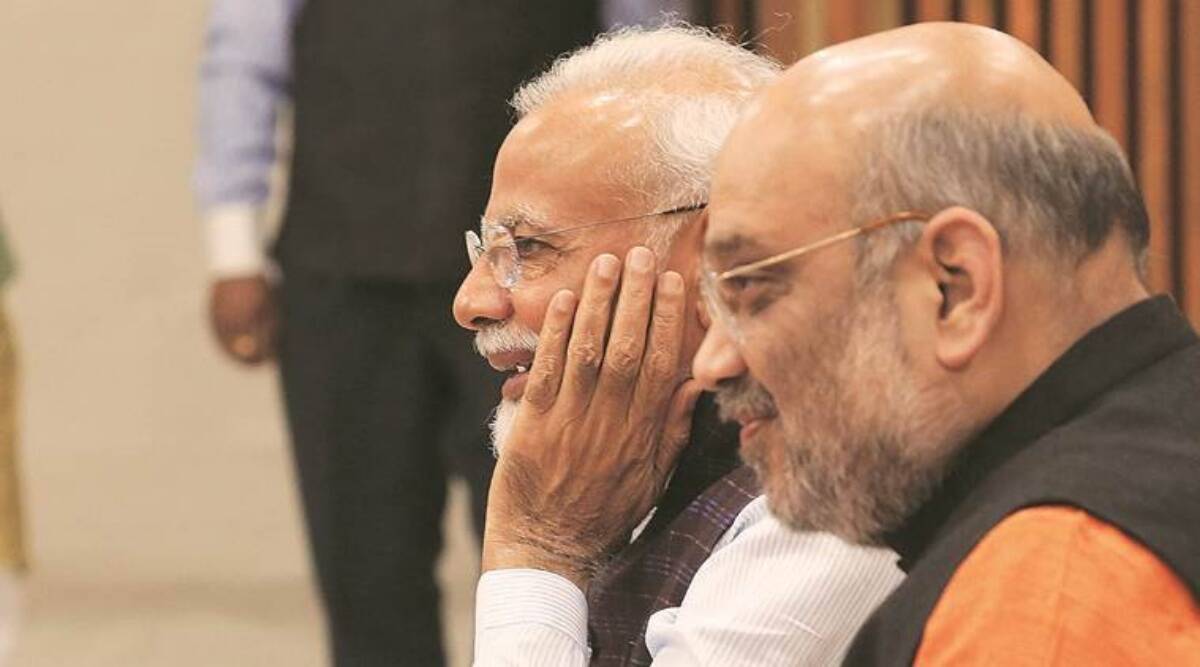During a recent conference of Director Generals and Inspectors of Police, which was attended by Prime Minister Narendra Modi and Union Home Minister Amit Shah, police personnel highlighted the involvement of Islamist and Hindutva organisations in relation to the country’s increasing radicalisation.
The role of such organisations was highlighted in papers given by officers during the January 20-22 conference held in Delhi. All submitted papers were posted on the conference’s website until Wednesday when they were withdrawn.
One article characterised organisations like the VHP and Bajrang Dal as extremist. Another individual cited the destruction of the Babri Masjid, the rise of Hindu nationalism, incidents of beef lynching, and the “ghar vapsi movement” as factors that radicalise young. These points were raised in the context of initiatives to combat Islamic extremism and the beliefs of groups like the Popular Front of India (PFI).
Several commanders advocated for more minority involvement in the political system and Muslim reservations in order to combat radicalization.
In one paper, an officer with the rank of SP classified radicalization as left-wing, right-wing, and Islamist fundamentalism. “Far-right individuals or groups hold an authoritative view of the state in which the state and its racially homogeneous population should be merged into a single entity. Even though India is a pluralistic country, it is seen as moving toward majoritarianism. The officer mentioned Anand Marg, VHP, Bajrang Dal, Hindu Sena, etc. in the paper.
The cop referred to Islamic extremists as a “looming threat.” “Islamist ideology divides the world into two distinct spheres: ‘Muslims’ and ‘the rest’ Example: PFI and frontals, Da’wate-Islami, Towheed, Kerala Nadvathul Mujahideen, etc.,” he wrote in his study.
“disproportionate utilisation of security establishment (Police and Intelligence)”; “minimum role of researchers, psychologists, and civil society”, “missing synergy between online and offline initiatives”, lack of curative policies”, and “Framework Flaws” were cited by the officer as obstacles.
To emphasise his point about “framework,” the officer used Germany’s “long-standing EXIT Deutschland initiative to reform neo-Nazi extremists.” Referring to Islamophobia in the United Kingdom, the officer’s document questioned “conspiracy websites and sensationalist reporting” that contribute to “bad communal perceptions of the Muslim ‘other’.”
As a response, the officer advocated for platforms, venues, and institutions where individuals can express their complaints and rage openly and freely.
In a second report, another officer with the rank of SP identified Islamic fundamentalism and Hindu fanaticism, among others, as threats. He categorised them as political-religious radicalism associated with groups like ISIS, right-wing radicalism associated with fascism, racial supremacism, ultranationalism, and Maoist violence.
This study linked “Jamaat-e-Islami and Jamiyat Ahle-Hadith with isolation and mistrust… The introduction of social media, the involvement of global Islam, the role of mainstream media, Hindu extremism, and civil society activists are all associated with radicalization.
The officer stated in his study that the destruction of the Babri Masjid, together with the rise of Hindu nationalism, beef lynchings, and the ‘ghar vapsi movement,’ provided extremist groups with fertile ground to recruit and radicalise young minds.
The article also mentioned the consequences of former BJP spokeswoman Nupur Sharma’s comments on the Prophet, including Kanhaiya Lal’s murder in Udaipur. “The reaction to Nupur Sharma’s statement demonstrates that everyone should avoid making religious comments and hate speeches. Similarly, belittling religious sentiments occurs frequently. Therefore, we must instil a strong sense of the “Rule of Law”… The radicalization of the accused in the Udaipur murder of Kanhaiya Lal was mostly attributable to the influx of inciting films and communications from within India and overseas, according to a report.
Among the proposed solutions were “De-racialization, economic growth, and equal opportunities”; more opportunities for “minorities to participate in political and administrative processes”; modernization of madrasas; and the establishment of industrial enterprises “in the areas inhabited by minorities.”
Among the other papers submitted, one officer stated that national and international circumstances frequently cause radicalism. The newspaper stated that these included the plight of Palestinians, Soviet intervention in Afghanistan, American invasion of Iraq and incursion in Afghanistan, military operations in Pakistan, the Danish cartoon controversy, the liberation of J&K and Hyderabad after independence, communal riots, the destruction of the Babri Masjid, the 2002 Godhra riots, and the Citizenship Amendment Act.
Among the proposed answers were “community participation utilising secular, patriotic, and intelligent Muslim youth” and community reservations in education and employment.
